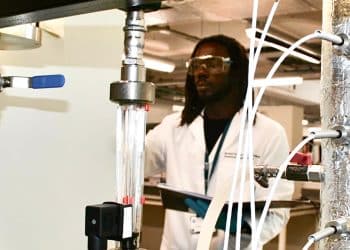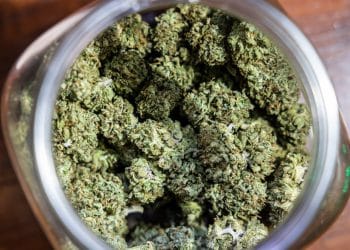Here you can find a selection of cannabis scientific studies published in the latest month. Each article is correlated with a short summary describing the purpose of the study and the main research findings.
A great cannabis culture comes from great and peer reviewed sources! For this reason we believe in the importance of consulting reliable sources. Whether you are interested in a particular article don’t hesitate to read the full piece for more information — we provide all the sources.
Cannabis and Health — Best New Findings
Does the co-use of cannabis exacerbate the effect of alcohol on the risk of accidents? A systematic review and meta-analysis
This review is written taking into account the systematic literature published about the improved risk of crashing induced by cannabis consumption. Many articles highlight the strong dose-related effects of alcohol on the risk of accidents while driving.
Nevertheless, significant main effects linked to tetrahydrocannabinol (THC) consumption are not mentioned in the consulted literature.
The main question of the article is whether the joint use of cannabis with alcohol makes any difference to the effect of alcohol itself on the risk of crashing.
Even if some authors claim the incurrence of cumulative effect of cannabis and alcohol, according to the meta-analysis of literature there might not be enough to support this claim.
Source: https://doi.org/10.1177/20503245231177334
Temporal Associations Between use of Psychoactive Substances and Somatic Symptoms in the Daily Lives of People with Fibromyalgia
This study provides insights regarding the temporal association between the consumption of psychoactive substances such as alcohol, nicotine, caffeine, opioids, and cannabis, and the fluctuations in somatic symptoms induced by fibromyalgia.
The rating of mental and physical fatigue were taken into account in order to predict the later use of psychoactive substances, Moreover the use of substances was explored in order to predict later changes in symptoms.
It came out that even if somatic symptoms predicted later use of substances, it was not the case for the other way around. In fact the use of substances didn’t show an appreciable alleviation of somatic symptoms in people affected by fibromyalgia.
Source: https://doi.org/10.1093/pm/pnad069
Hormonal control of promoter activities of Cannabis sativa prenyltransferase 1 and 4 and salicylic acid mediated regulation of cannabinoid biosynthesis
This in depth study of the hormonal regulation of cannabinoid biosynthetic genes offers relevant information to plant biology. The research focuses on the molecular signals initiating and regulating cannabinoid biosynthesis starting with trichomes formation.
Studies with salicylic acid, an important hormone in plants involved in plant defense, growth and development, demonstrated an increased gene expression of those downstream of the cannabinoid biosynthetic pathway.
So, researchers demonstrated the interaction between certain hormones and cannabinoids biosynthesis, as well as the correlation between molecular mechanisms regulating gene expression and influencing plant chemotypes.
Source: https://doi.org/10.1038/s41598-023-35303-4
Characterizing heterogeneity among people who use cannabis for medicinal reasons: A latent class analysis of a nationally representative Canadian sample
This research investigated the cannabis use frequency, the forms of cannabis used, concurrent non-medicinal cannabis use, and the medical conditions and symptoms cannabis was used for, in order to identify the socio-demographic conditions of people using cannabis for medicinal reasons. The risks of cannabis-related harms in these subgroups of people is also investigated.
From this study a considerable heterogeneity of people reporting cannabis use for medical purposes was revealed. The risks of harm coming from cannabis consumption of these groups of people is linked to the specific motivations and behaviors of individuals
Source: https://doi.org/10.1016/j.drugpo.2023.104076
Longitudinal associations between insomnia, cannabis use and stress among US veterans
A large portion of military veterans are particularly vulnerable to irregular sleep schedules, mood disorders, combat-related stress among other mental illnesses.
Researchers performed this study on a sample of US veterans aged between 18 and 40 years old over 12 months.
The attempt was to evaluate veterans’ proportional change of insomnia, perceived stress and cannabis use.
The study results reveal a complex pattern of the three constructs. To make an example for those with chronic sleep disorders the use of cannabis can reduce the perceived stress about that.
Nevertheless this could lead to an increase of symptoms of insomnia. In general, increased levels of cannabis use are associated with greater levels of stress. Increased cannabis consumption could also increase the severity of insomnia and stress.
Source: DOI: 10.1111/jsr.13945
Coronary thrombosis and cannabis abuse: a case report
The main psychoactive cannabinoid delta-9-tetrahydrocannabinol (THC-9) can have various cardiovascular side effects such as acute coronary syndrome, arrhythmias and sudden cardiac death. This study case is based on the hospitalization of a young man without prior heart issues due to heart attack induced by cannabis overconsumption.
The doctors, after coronary angiography the thrombotic occlusion of the left anterior descending coronary artery. This article describes the association between acute coronary syndrome and cannabis abuse.
Source: DOI: 10.1714/4041.40208
Medicinal cannabis for pain: Real-world data on three-month changes in symptoms and quality of life
Medicinal cannabis became legal in Australia in 2016. By November 2022, 55 participants with chronic pain completed the first three month follow-up. They did it to check the pain intensity and the interference with their life.
The primary evidence from this study is that medical grade cannabis may reduce pain interference and severity.
The study also shows a significant amelioration of life, mood, sleep, and general health in chronic pain patients.
Authorities should make medical grade cannabis more widely available and lower the costs associated with its use.
Source: https://doi.org/10.1177/20503245231172535
Cannabis Use Disorder and Subsequent Risk of Psychotic and Nonpsychotic Unipolar Depression and Bipolar Disorder
The association with cannabis use disorder and incurrence of psychiatric disorders has not been studied sufficiently. This research focuses on Denmark individuals. The findings suggest that cannabis use disorder independently associates with bipolar disorder and unipolar depression..
The increased risk of psychotic and non-psychotic disorders have been highlighted and estimated as hazard ratios using Cox proportional hazards regression with time-varying information on cannabis use disorder.
Source: doi:10.1001/jamapsychiatry.2023.1256
Co-exposure to cannabis and nicotine during pregnancy alters fetal lung development
In this study, the researchers analyzed human fetal lung development in vitro after administering physiological concentrations of THC, CBD, and nicotine alone and in combination for 72 hours. They conducted the experiment on human fetal lung explants cultured on air-liquid interface after 10-20 weeks of gestation.
It was observed a thickening of the mesenchymal compartment of lung explants and increased formation of cysts.
The study results highlight an age dependent senescence and alteration of lung fetal cellular proliferation that appears to be age dependent. The use of cannabis and cigarettes during pregnancy can pose serious risks on fetal development and health.
Source: https://doi.org/10.1152/physiol.2023.38.S1.5764584
Cannabis use in gynecologic cancer patients in a Canadian cancer center
One of the aims of this study survey is to analyze patterns of cannabis use among patients with gynecologic malignancies. The most commonly described symptoms inducing survey participants in consuming cannabis were anxiety, pain and insomnia.
Many women affected by gynecologic cancer reported their interest in discussing cannabis prescription if their doctor would have introduced the argument. From this study came out that there is a lack of evidence-based information about cannabis and their potential benefits for gynecologic cancer patients treatment. And The survey indicates that patients would like to talk to their oncologist about cannabis.
Source: https://doi.org/10.1016/j.gore.2023.101210
Chronic cannabigerol administration lowers blood pressure in phenotypically normal mice
In this study, researchers investigated the hypothesis that cannabigerol (CBG) could potentially decrease blood pressure in mice when administered chronically. They continuously tested heart rate, blood pressure, and locomotor activity by applying implanted probes in animals.
Chronic CBG administration may produce a small but significant decrease in blood pressure in normal mice. The chronic CBG administration had a lower impact on blood pressure compared to CBG acute administration. This study gives important info regarding the potential hypotensive CBG effects under normotensive conditions.
Source: https://doi.org/10.1152/physiol.2023.38.S1.5726031
Cannabis Growing & Nutrition Studies
Hemp Seed Meal: A Potential Feedstuff in Equine Rations
This literature review focuses on investigating the potential of hemp seed meal to replace other protein sources, such as linseed and canola meals, for animal diets.
Hemp Seed meal doesn’t fully replace soybean meal, but it is an important source of simple carbohydrates, high fiber and high crude proteins.
Furthermore, researchers observed that the equine diet’s hemp seed meal is highly digestible compared to other types of feeding. Other research studies have indicated that including hempseed meal as 10-20% of the animal diet could be optimal. Notice that incorporating this type of meal in slaughtered animals doesn’t negatively impact the final meat taste, as well as the quality of milk or eggs.
Source: Springer, Ryon Wilson. Hempseed Meal: A Potential Feedstuff in Equine Rations. Diss. Tarleton State University, 2023.
Hemplime and Free-Form Hybrids: Sustainable Design through Computational Innovation
This study employs a hybrid free-form design blending traditional construction techniques with the use of modern and eco-friendly materials. Digital fabrication and computational design permit the creation of projects focusing on sustainability.
Researchers investigate the optimal balance of strength and insulation of prefabricated hempcrete blocks with a tectonic frame, minimizing the need for formwork. This study serves as inspiration for architects to shape a more environmentally friendly building approach.
Source: http://orcid.org/0009-0003-1763-6566
Challenges and Potentials of New Breeding Techniques in Cannabis sativa
This review focuses on the current status of cannabis breeding techniques. Researchers propose the suggestion of new breeding techniques to overcome the issue of modifying the cannabinoid profile when introducing new traits.
Information on suitable target genes, introducing a genome editing tool into plant tissue, and the ability to regenerate plants from transformed cells can overall support successfully using genetic-engineering breeding methods.
The application of new breeding techniques based on genome editing could lead to an overall improvement of cannabis understanding and it could also help reveal completely the potentials of this valuable plant.
Source: doi: 10.3389/fpls.2023.1154332
Evaluation of different hemp (Cannabis sativa L.) progenies resulting from crosses with focus on oil content and seed yield
This study investigates the breeding potential of 17 different hemp varieties crossed for the purpose, focusing the research on seed and oil characteristics.
One of the main objectives of cannabis breeding is the maximization of seed yield and also of the contained oil. This study focuses on this exact aspect.
Hemp seeds contain high amounts of fatty acids including oleic acid, linoleic acid and linolenic acid, stearic acid and palmitic acid. In particular linoleic and linolenic acids also known as omega-3 and omega-6 are particularly important for metabolic life processes in the human and animal diets.
For this reason, in the idea of commercial hemp cultivation optimization, studies related to different genotypes and cross breeding leading to different plant traits are particularly important.
Source: https://doi.org/10.1016/j.indcrop.2023.116893
Most Important Studies in the Extraction Industry
Valorization of cannabis green waste to cellulose nanomaterials via phosphoric acid hydrolysis
Through phosphoric acid hydrolysis it is possible to isolate cellulose nanomaterial from hemp biomass. In the context of circular economy, this research proposes a method to valorize hemp green waste while minimizing the impact of this expanding industry. They used hemp as a model for high tetrahydrocannabinol (THC) containing varieties.
Phosphoric acid-hydrolyzed bast fibers produce cellulose nanocrystals (CNC), while hurd-derived fibers give nano-fibril like particles without chemical pretreatment.
Moreover this study highlighted that the addition of hydrogen peroxide to the sodium hydroxide pretreatment can reduce the variation of cellulose nanocrystals sizes independently if they derive from bast or hurd fibers.
Source: https://doi.org/10.1016/j.indcrop.2023.116888no
Veterinary Use of Cannabis — Best Latest Findings
Combining cannabis and melatonin treatment with a rehabilitation program improved symptoms in a dog with compulsive disorder: A case report
Sometimes dogs manifest repetitive and compulsive behaviors because of their incapacity in dealing with stressful situations. This article investigated a tailored rehabilitation program for dogs with compulsive disorder.
A combined treatment using cannabinoids such as cannabidiol (CBD) and melatonin may be an effective treatment to improve mood disorders, fear, anxiety and phobia in dogs.
Even though this study reported a positive outcome after long-term treatment of the dog showing obsessive-compulsive behavior, there is not enough evidence of the combined effectiveness of CBD and melatonin. In any case, this study provides important data that researchers could take into account for future investigations on this topic.












